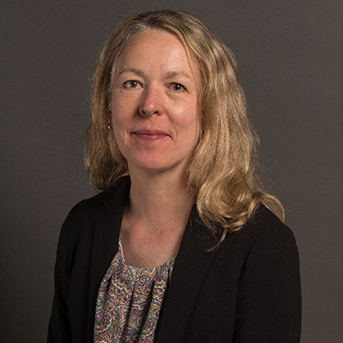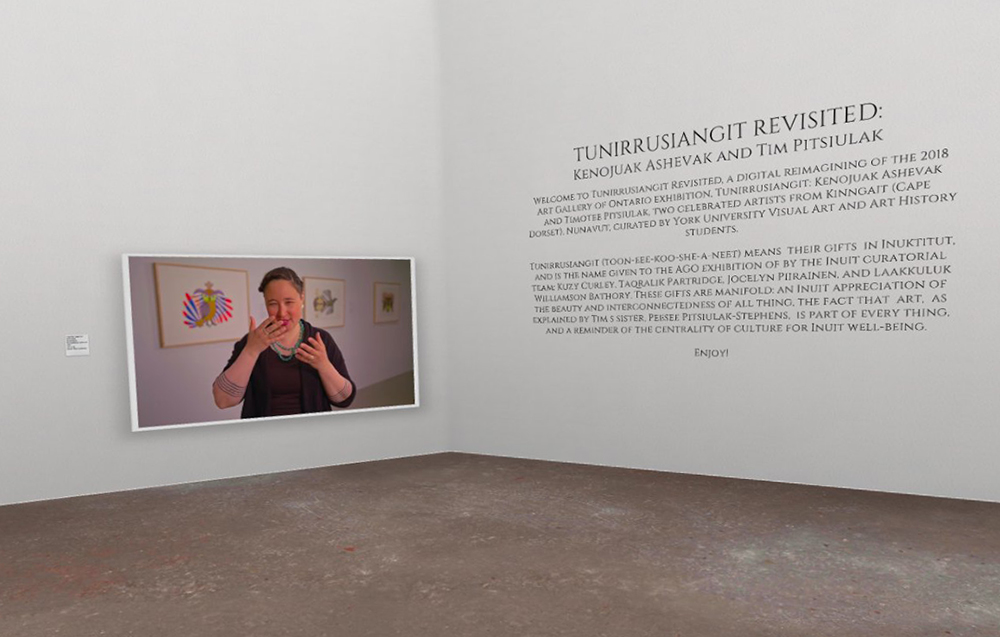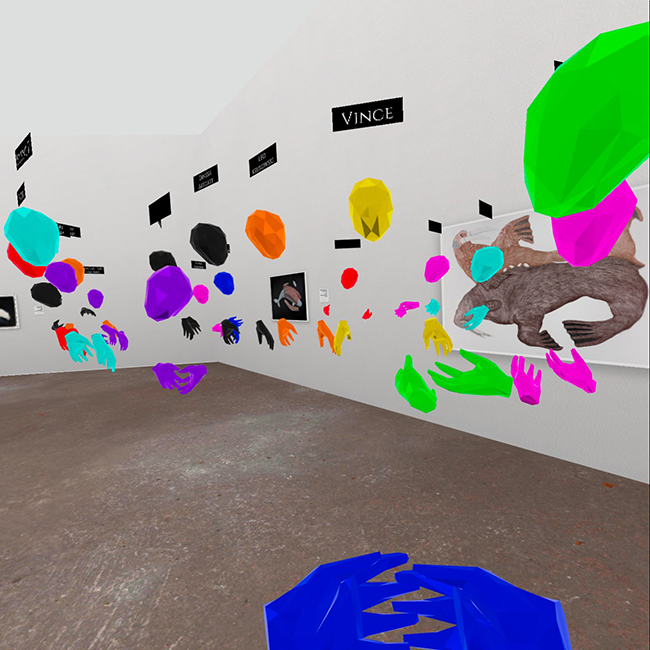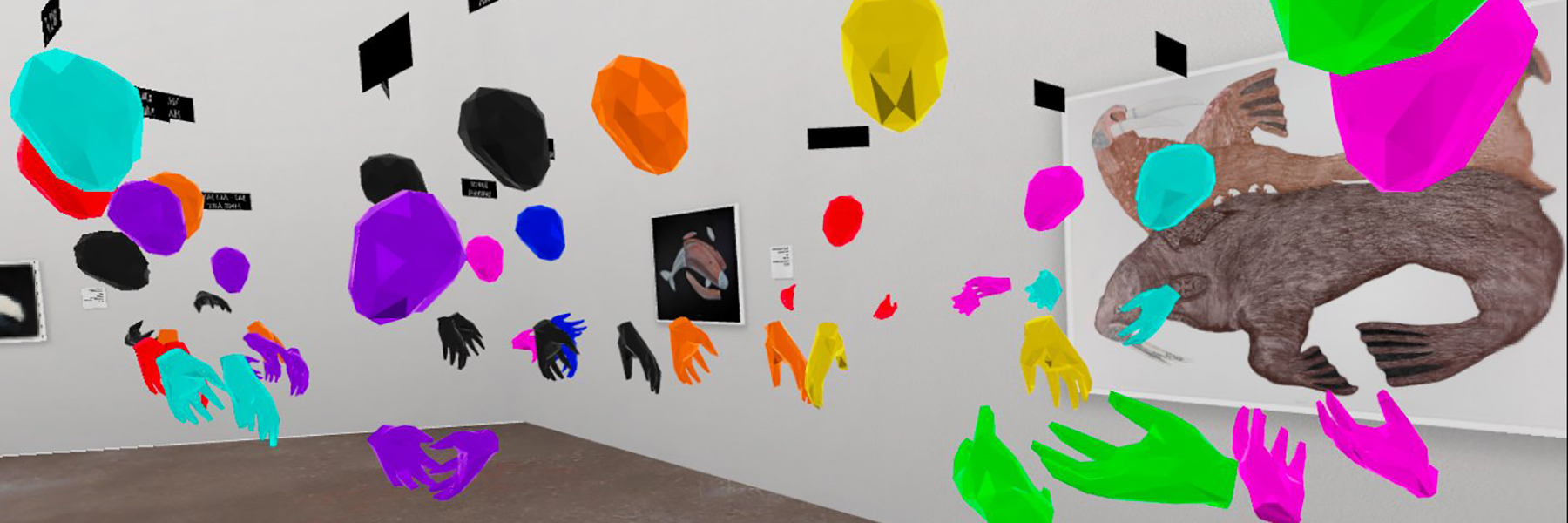A multimedia, multi-platform collaborative research and creation project based at York University has ignited a dialogue within the arts and research communities about the role of colonialism in disrupting Inuit cultural conditions.

While Inuit art can be found in galleries and museums around Canada and the world, the connection between the artists and their communities has been lost, posing a risk to the preservation of Inuit language, social well-being and cultural identity.
Reconnecting Inuit art and community was the basis of the Mobilizing Inuit Cultural Heritage (MICH), a multimedia, multi-platform collaborative research and creation project supported by the Social Sciences & Humanities Research Council of Canada. Led by Anna Hudson, a professor in the Visual Arts Department at the School of the Arts, Media, Performance & Design (AMPD), the project aimed to ignite an ongoing dialogue within the arts and research communities to help understand the role of colonialism in disrupting Inuit cultural traditions, and to raise public awareness and appreciation of Inuit and circumpolar Indigenous resilience.
“The MICH project was premised on the idea that there are huge collections of Inuit art in museums but often times they are missing the artists’ voice and story,” says Hudson, a Fellow of the Royal Society of Canada, an art historian and curator, specializing in Canadian art, curatorial and Indigenous studies.
“There are many instances of Inuit art produced for the post-World War Two market that have accrued in value after having been sold by the artist, benefiting the individuals who purchased or subsequently resold the art, but severing the art’s connection to the people who made it. The art didn’t stay in Arctic communities, so family members aren’t aware that a relative created well-known art that is housed and exhibited in museums and galleries,” she says.
“There is little public understanding of where Inuit art comes from and how a community’s story lives on through the art,” says Hudson.
“Through MICH, we tried to reconnect Indigenous art with Indigenous communities and provide artists with a platform to showcase their work and to build creative capacity,” she says, adding that the project looks at curation as a methodology for bringing people together on a deeper, more profound level to instigate meaningful dialogue and relationship building.
MICH witnessed a crescendo of Inuit voices and artists dating back to the 1970s, but Hudson admits it will still take time for younger generations to take the lead and have their voices heard. She says that while there has been significant progress, it is difficult to shift processes with museums and the number of Inuit academics in Canada is still too low.
But since the seven-year project began, there has been a growing awareness and advocacy around Indigenous culture, language and ways of life.
“It is interesting to see how MICH was part of a constellation of activities for raising awareness,” says Hudson. “The big takeaway for me was the relationships I’ve developed and the deep friendships I’ve made. I’ve had the opportunity to meet brilliant people. “The project was about activism, trust and the ability to learn. There is no reconciliation without reckoning.”
Through the partnership grant in collaboration with York University, Inuit artists Ruben Komangapik and Koomuatuk (Kuzy) Curley were commissioned to create a sculpture titled “Ahqahizu.” The sculpture, which is situated at the entrance to the York Lions Stadium on the Keele Campus, is carved out of a 26-tonne rock and reflects the University’s ongoing commitment to represent the identities of Inuit artists.

MICH collaborated with the Art Gallery of Ontario (AGO) to support a major exhibit in 2018, Tunirrisangit, which brought together two artists, Kenojuak Ashevak and her nephew Timootee (Tim) Pitsiulak. It was the first time that Inuit art was displayed in the AGO’s largest exhibition space. As part of the collaboration, MICH supported a seal fest (an alternative culinary festival) for the opening of Tunirrisangit and the gallery hosted a virtual reality exhibit during the COVID-19 pandemic that was produced by Hudson with fourth-year AMPD students for the Joan Goldfarb Visual Arts Study Centre Curatorial Placement, a course held during the Winter 2020 term at York University. The group worked in collaboration with Art Gate VR to produce the exhibit for the AGO.

Coming out of MICH will be a book to be published in July 2022. The book by Hudson, titled Qummut Quikiria! Art, Culture and Sovereignty Across Inuit Nunaat and Sápmi: Mobilizing the Circumpolar North (translates to Up Like a Bullet! Art, Culture and Sovereignty Across Inuit Nunaat and Sápmi: Mobilizing the Circumpolar North) is co-edited with Professor Heather Igloliorte from Concordia University and Jan-Erik Lundström, a curator based in Sweden. The book highlights the thriving art and culture of the Indigenous Circumpolar Peoples in the present and demonstrates its importance for the revitalization of language, social well-being, and cultural identity.


